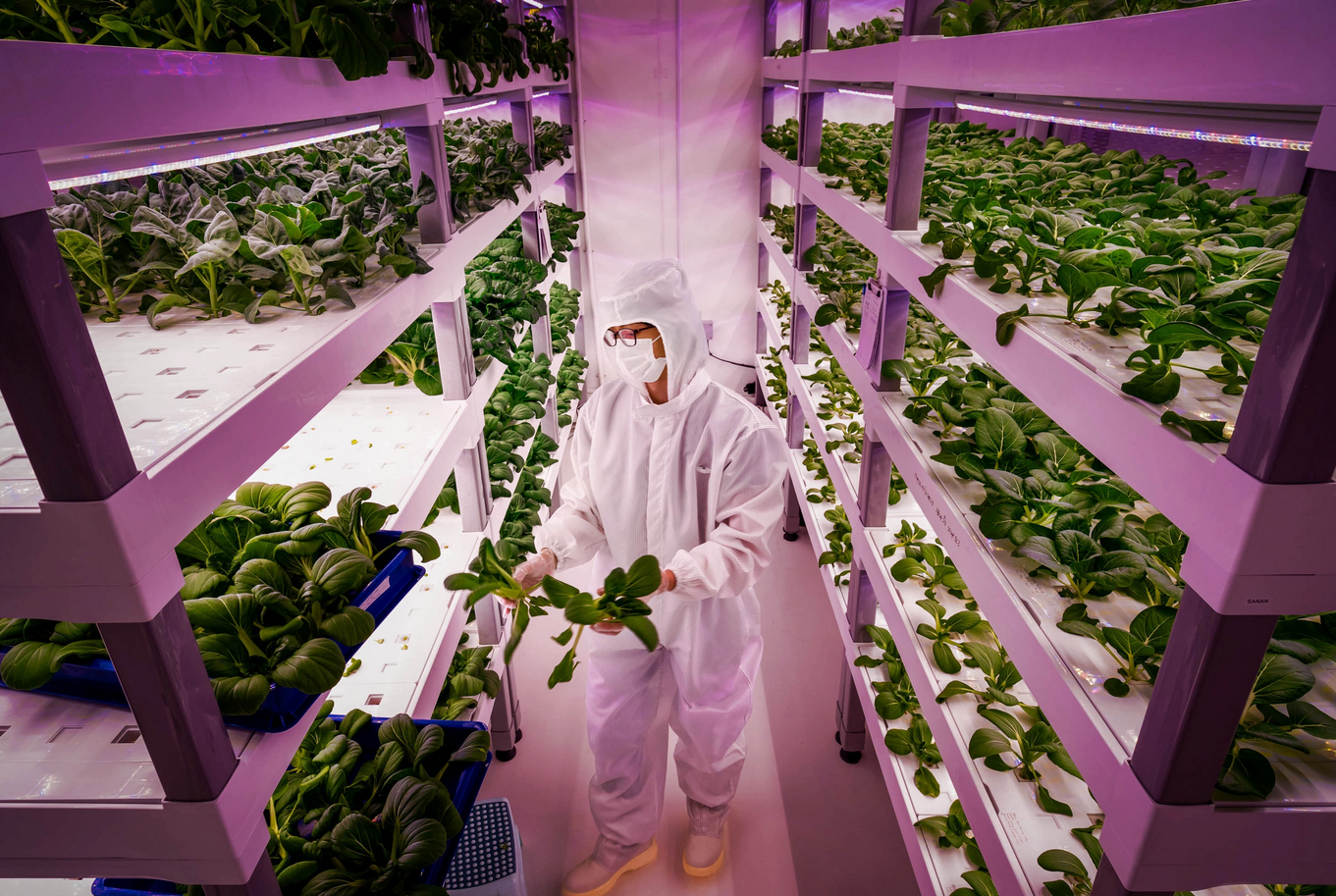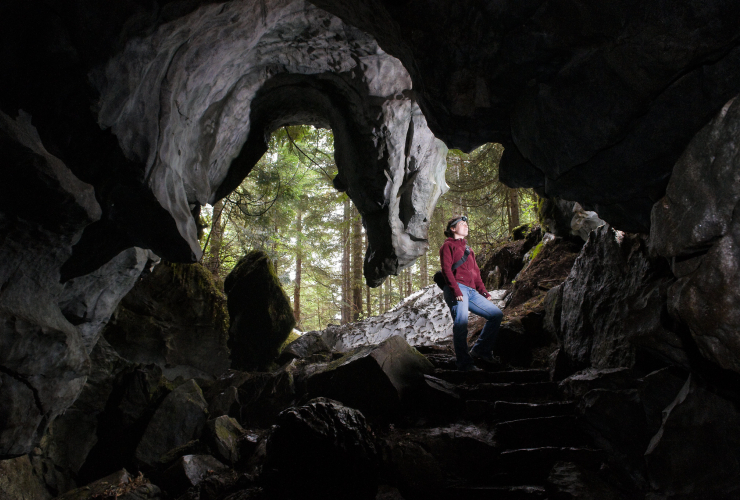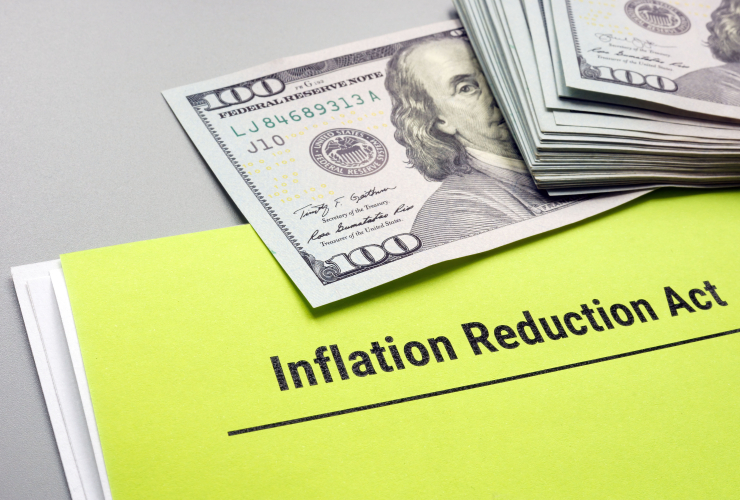This story was originally published by The Guardian and appears here as part of the Climate Desk collaboration.
Behind an airtight door, inside a warehouse 10 minutes walk from Bristol city centre, shelves of vibrant chives sprout enthusiastically towards a sky of multicoloured LEDs. The air they are transpiring smells earthy, despite the absence of soil, while a mechanical hum provides a soothing substitute for birdsong.
Welcome to the future of farming, where herbs, salads and soft fruits are grown year-round in vast, indoor plant factories.
In June, the British vertical farming startup the Jones Food Company (JFCo), announced it was building the world’s largest vertical farm on the site of an old forge in Lydney, Gloucestershire.
Its CEO, James Lloyd-Jones, predicts that within 10 years, the U.K. could be growing all its herbs, salad leaves, soft fruits — and potentially cut flowers — this way: “Vertical farms will become the norm within the supply chain, and probably take away greenhouse production and imports.”
The seeds of this revolution are being sown — in vertically stacked layers of sheep’s wool — at JFCo’s innovation centre in Bristol. Lloyd-Jones said: “Vertical farming can grow anything. It just grows lots of things too expensively to be commercially viable, so here is where we are learning how to commercialize it.”
In the first of four 69-square-metre grow rooms are stacks of brilliant green chives. Every environmental parameter in the room is tightly controlled, from the temperature, humidity and carbon dioxide content of the room, to the colour spectrum, intensity and pattern of the light-dark cycle, and the nutrients the seedlings are exposed to.
By tweaking these parameters, and experimenting with different plant varieties, they are investigating the optimal conditions in which to grow these herbs.
“You’re taking away the need for sunlight, and creating every environmental parameter perfectly for the plants’ needs. You’re giving them their best time — effectively, two weeks in Barbados, where they’re coming back relaxed — and then you’re harvesting them,” said Lloyd-Jones.
It’s easy to spot which seedlings have hit the jackpot: some of the trays contain lush green carpets of chives; others patchy outcrops.
Down the hallway, similar experiments are taking place with coriander and dill, while a 276m2 strawberry laboratory is being constructed across the corridor.
Farming this way could have numerous advantages. “One of the big benefits is that we’re growing in a way that doesn’t impact on nature,” said Charlie Guy, cofounder of LettUs Grow, a Bristol-based company that’s developing technology for vertical farms.
“It also means we can focus more of our land on things like tree planting. So, from a biodiversity standpoint, there are massive benefits.”
Because the nutrient-rich water bathing the plants’ roots is cleaned and reused up to 30 times, there’s less wastage. There’s also no runoff of pesticides into neighbouring waterways, and no need for herbicides or pesticides because the plants are shut away indoors.
Stacking plants above one another on shelves and growing them in consistent and optimized conditions 365 days a year also means that, in theory, every square metre of land is more productive, compared to conventional farms.
Another benefit is consistency in the produce itself. “Vertical farming allows you to grow things with a very consistent appearance and flavour, which means they can be packed more efficiently, and there’s less waste because fewer of the items are unattractive to supermarket buyers,” said Prof. Antony Dodd at the John Innes centre, a research hub in Norwich.
Even so, as of 2020, only about 30 hectares (75 acres) of operational vertical farmland existed worldwide. A key challenge is that growing crops indoors 24/7 requires a lot of electricity — to power the lights, heaters, humidifiers and other equipment.
JFCo’s solution is investment in renewable energy: The roof of its farm in Lydney — which will eventually provide 1.5 hectares of growing space (equivalent to about 60 tennis courts) — will be entirely covered in solar panels, with space for further panels or a wind turbine on neighbouring land.
Guy said: “Energy is always an issue with vertical farms, but when you tie that to renewable energy, then it really is a very sustainable way of growing food, versus importing it from around the world, and the sustainability and supply chain risk issues associated with that.”
Companies are also exploring technologies that could reduce the cost of labour, eg., by semi-automating the harvesting process: “A bit like a [robotic] Amazon or Ocado pick station, where you do what you need to do with the plant — prune it, pollinate it, take the strawberries off it — and then put it back in its position,” said Lloyd-Jones.
To further boost productivity, LettUs Grow is developing aeroponic growth methods, which involve spraying the plant’s roots with a very fine mist of nutrient solution, rather than standing them in it (hydroponics).
If the plants have healthy roots, they are going to be able to use energy more efficiently and grow much better. A good analogy is, “if you think about a nice healthy soil, it’s got lots of air pockets in it, it’s got the right amount of nutrients, the right amount of moisture — we can effectively recreate that using aeroponics,” said Guy.
Even if these plant pioneers can make vertical farming cost-effective, it is unlikely to replace traditional farming for staple crops, such as wheat, rice or potatoes. These have a longer growing period and require a lot of light, compared with herbs or salad leaves.
“A field of wheat also doesn’t sell for as much money as a field of lettuces. There’s a sweet spot in terms of the speed at which things grow, and the amount of energy that needs to go into the system, in order for these facilities to be economically viable,” said Dodd.
Where vertical farming could be viable is for crops with shorter growing seasons, such as salad leaves, herbs and soft fruits such as strawberries or blueberries.
“It is not the answer to food security, but it’s one of a range of different things that can contribute to producing food in a more sustainable way,” Dodd said.
So instead of having the sun
So instead of having the sun shine on their plants, they're going to have it shine on solar panels on the roof, which will turn the sunlight into electricity at maybe 20% efficiency or something, and then use that electricity to make light for the indoor plants at maybe 85% efficiency. Brilliant! How could that not be sustainable?





Comments